In our journey towards sustainability, eco-villages stand out as beacons of hope and innovation. These intentional communities aim to live in harmony with nature, combining ancient wisdom with modern ecological practices to create a sustainable, cohesive society. But what exactly makes an eco-village, and why are they so crucial in our fight against environmental degradation? Let’s dive into the heart of eco-villages and discover how they’re paving the way for a greener, more connected future.
Integrated Design and Ecological Building
Eco-villages are pioneering the future of housing with their commitment to integrated design and ecological building practices. These communities are not just about creating structures; they’re about crafting homes that exist in perfect harmony with their environment. Using locally sourced, sustainable materials like bamboo, straw bales, and cob, eco-villages reduce their carbon footprint and support local economies. Energy-efficient designs, such as passive solar orientation, green roofs, and natural insulation, keep homes comfortable year-round, reduce energy consumption, and ensure that the buildings themselves contribute positively to the environment. Moreover, ecological building in eco-villages extends beyond individual homes to include communal spaces that foster social interaction and connectivity, making sustainability a shared journey.
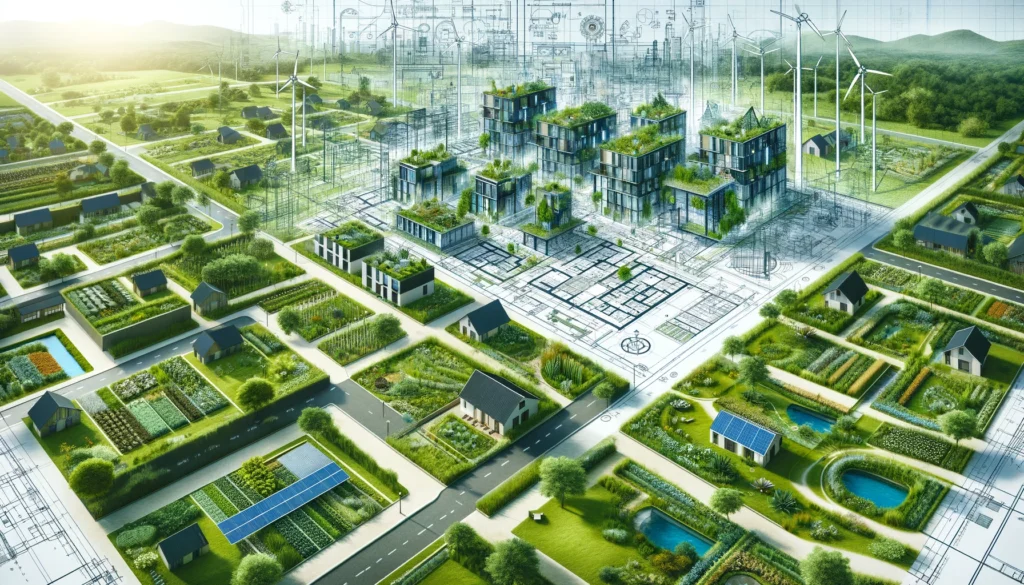
Sustainable Agriculture and Food Systems
In the heart of every eco-village lies a commitment to sustainable agriculture and food systems that nourish both the community and the earth. Eco-villages adopt practices like organic farming, which eschews synthetic pesticides and fertilizers, and permaculture, a design principle that mimics the no-waste, self-sustaining patterns of natural ecosystems. These methods do more than just produce food; they create ecosystems that restore soil health, conserve water, and foster biodiversity. Community gardens and food forests become places of learning and connection, where villagers not only grow their food but also deepen their relationship with the land. By prioritizing local food production and ethical sourcing, eco-villages ensure food security, reduce their environmental impact, and support a diet that is healthy, ethical, and sustainable.
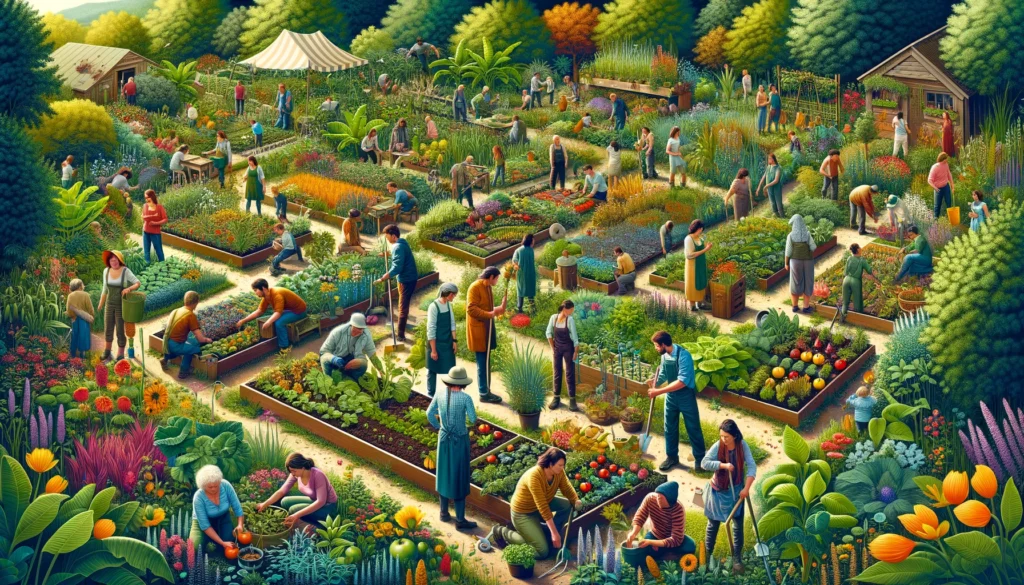
Renewable Energy and Resource Management
Renewable energy and resource management are the lifeblood of eco-villages, ensuring that their ecological footprint is as light as possible. Solar panels gleam in the sunshine, wind turbines catch the breeze, and sometimes, micro-hydropower systems harness the power of flowing water, providing clean, renewable energy that powers everything from kitchen appliances to community workshops. But it’s not just about generating energy; it’s about using it wisely. Eco-villages implement cutting-edge water conservation techniques, such as rainwater harvesting and greywater recycling, to make every drop count. Waste is seen as a resource, with composting systems turning organic waste into rich soil for the gardens, and recycling programs minimizing the need for external waste disposal. This holistic approach to resource management demonstrates that living sustainably doesn’t mean sacrificing comfort or convenience; it’s about being mindful stewards of our planet’s resources.

Each of these elements—integrated design and ecological building, sustainable agriculture and food systems, and renewable energy and resource management—illustrates the eco-village’s commitment to a sustainable lifestyle that respects the earth and fosters community. Through innovative practices and a spirit of collaboration, eco-villages show us that a sustainable future is not only possible but is already unfolding in communities around the globe.
Community Living and Social Engagement
Eco-villages redefine the concept of community, creating spaces where every individual is valued, and every voice is heard. The essence of community living in these settings is about forging deep, meaningful connections—not just with the people around us but with the land we share. Communal living spaces shared meals, and collective decision-making processes are the norm, encouraging a culture of cooperation and mutual respect. This social engagement goes beyond mere cohabitation; it’s about creating a support system that spans generations, where learning, laughter, and life’s milestones are shared. Workshops, community gatherings, and celebrations are integral, strengthening the bonds between residents and reinforcing their shared commitment to sustainability and social well-being. This model of living challenges the isolation seen in much of modern society, offering a more fulfilled, interconnected way of life.
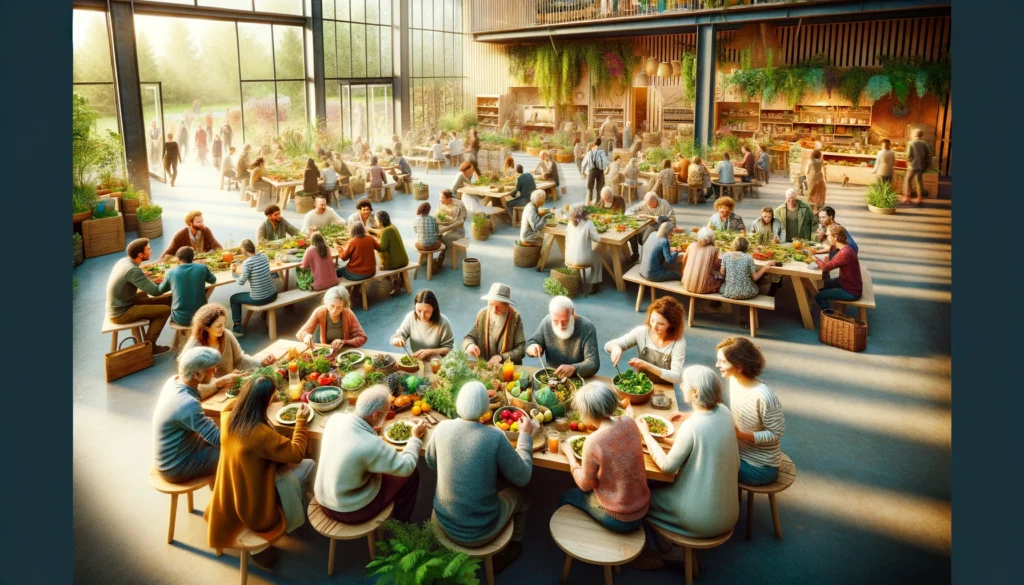
Economic Sustainability
Economic sustainability in eco-villages is about creating systems that provide for the community’s needs without compromising the environment or the well-being of future generations. By integrating alternative economic models such as local currencies and bartering systems, eco-villages foster economies that are resilient, equitable, and grounded in local resources and talents. These models not only reduce reliance on external economies but also strengthen community ties, as goods and services circulate within the village, enriching everyone involved. Cooperative businesses, from organic farms to renewable energy cooperatives, are common, providing employment opportunities for residents while adhering to principles of sustainability and fairness. This approach to economy and work reimagines what prosperity means, prioritizing quality of life and environmental health over profit and consumption.
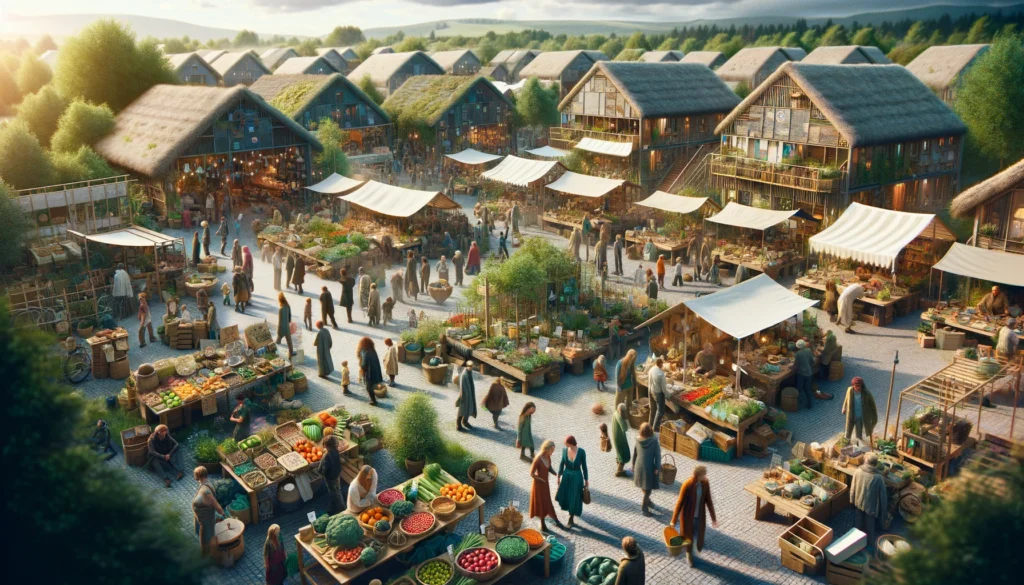
Education and Outreach
Education and outreach are the pillars upon which eco-villages build their legacy, extending their impact far beyond their physical boundaries. By acting as living laboratories, eco-villages invite the world to learn from their experiments in sustainable living. Workshops on organic farming, renewable energy, sustainable building techniques, and more offer hands-on learning opportunities for both residents and visitors. School groups, university students, and curious individuals flock to eco-villages to gain insights into a lifestyle that prioritizes harmony with nature. But the flow of knowledge is not one-way; eco-villages also benefit from the fresh perspectives and enthusiasm of their visitors. Through tours, volunteer programs, and partnerships with educational institutions, eco-villages disseminate their principles and practices, inspiring a broader audience to adopt more sustainable lifestyles.
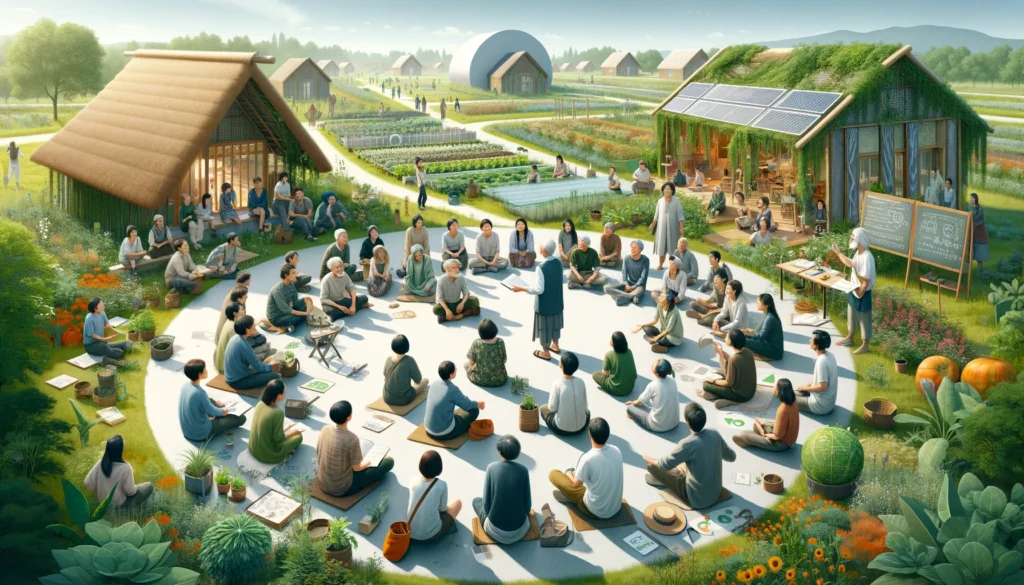
In weaving together community living and social engagement, economic sustainability, and education and outreach, eco-villages offer a holistic model for a sustainable future. They prove that living in harmony with the environment is not only viable but enriching and fulfilling, providing a blueprint for others to follow. As we continue to explore the wonders and challenges of sustainable living, let these principles guide our journey towards a more sustainable and connected world.
Conclusion: A Beacon for the Future
Eco-villages are more than just communities; they are a call to action, challenging us to reimagine our relationship with the environment and each other. By integrating sustainability into every aspect of living, eco-villages offer a blueprint for a future that is not only possible but is already being realized today. As we move forward, let their example inspire us to make choices that honor the earth and foster a sense of community. Stay tuned for our next blog, where we’ll delve into Sustainable Business Models, exploring how businesses are embracing sustainability for a better tomorrow.
Author’s Note
Thank you for joining me on this exploration of eco-villages. I hope that these insights not only inform but also inspire you to think differently about how we live and interact with our planet. Eco-villages remind us that sustainable living is not just a dream—it’s a reality being lived every day by communities around the world. Let’s carry these lessons into our lives, wherever we may be.
G.C., Ecosociosphere contributor.
References and Further Reading
- Global Ecovillage Network (GEN): https://ecovillage.org/
- The Foundation for Intentional Community (FIC): https://www.ic.org/
- “Sustainable Communities: The Potential for Eco-Neighbourhoods,” by Hugh Barton.
- “Creating a Life Together: Practical Tools to Grow Ecovillages and Intentional Communities,” by Diana Leafe Christian.

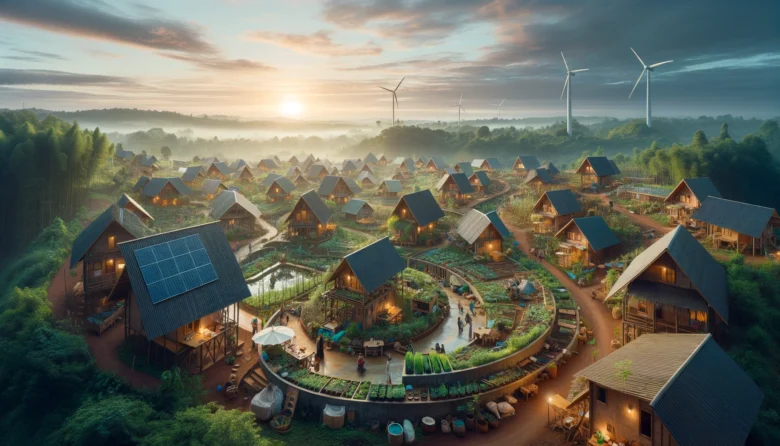



Comments
Can you be more specific about the content of your article? After reading it, I still have some doubts. Hope you can help me.
Thanks for sharing. I read many of your blog posts, cool, your blog is very good.
I don’t think the title of your article matches the content lol. Just kidding, mainly because I had some doubts after reading the article.